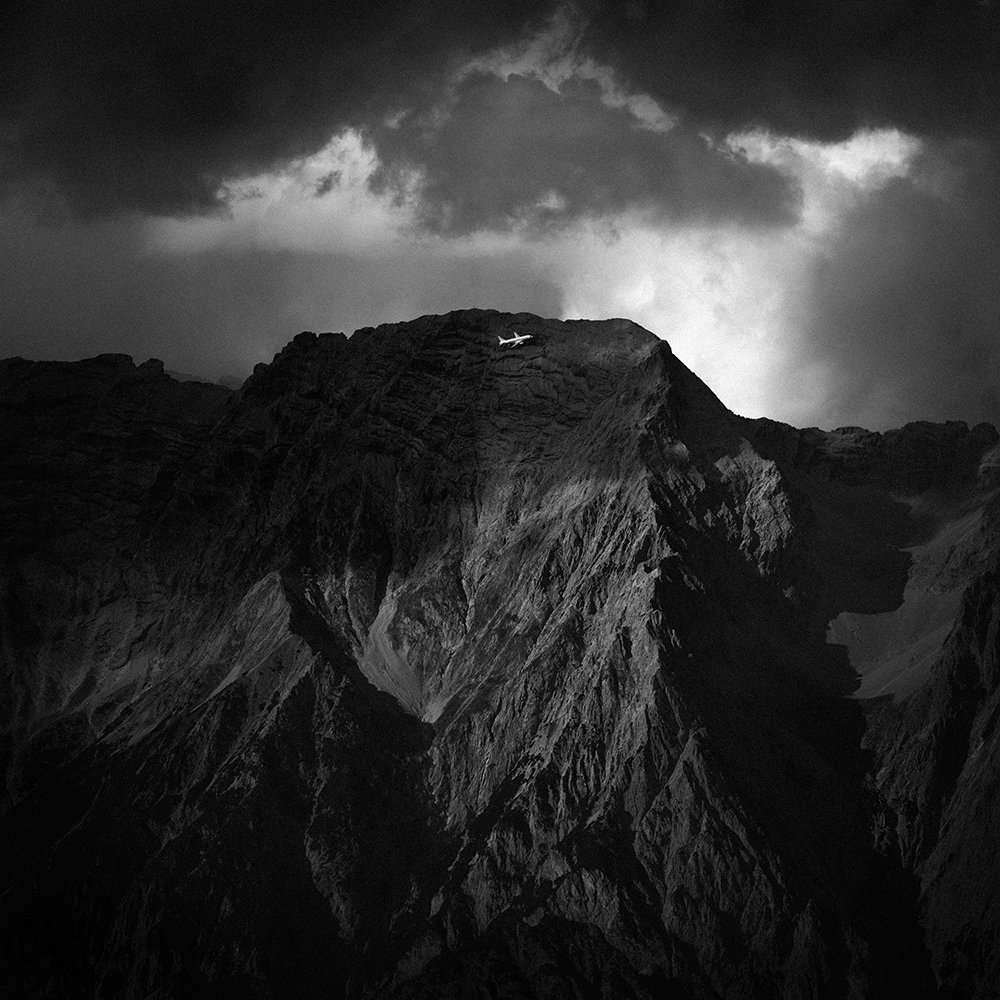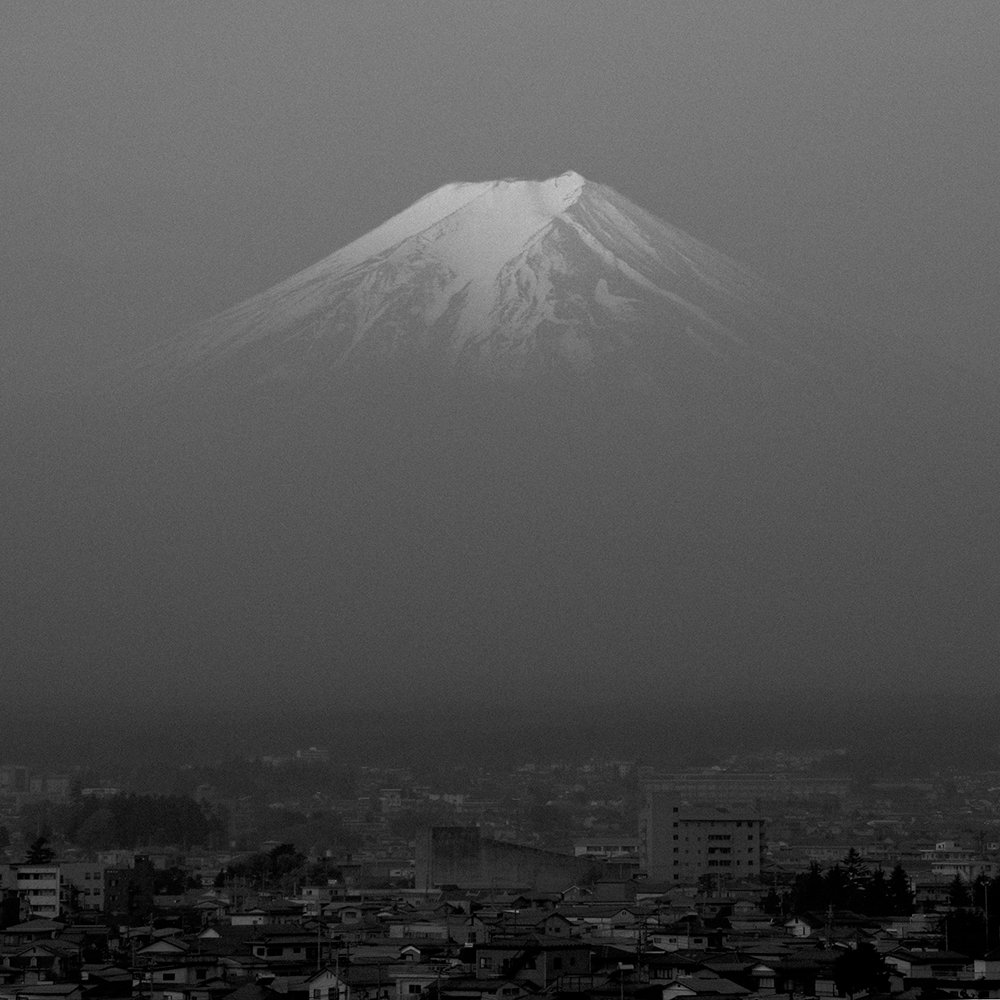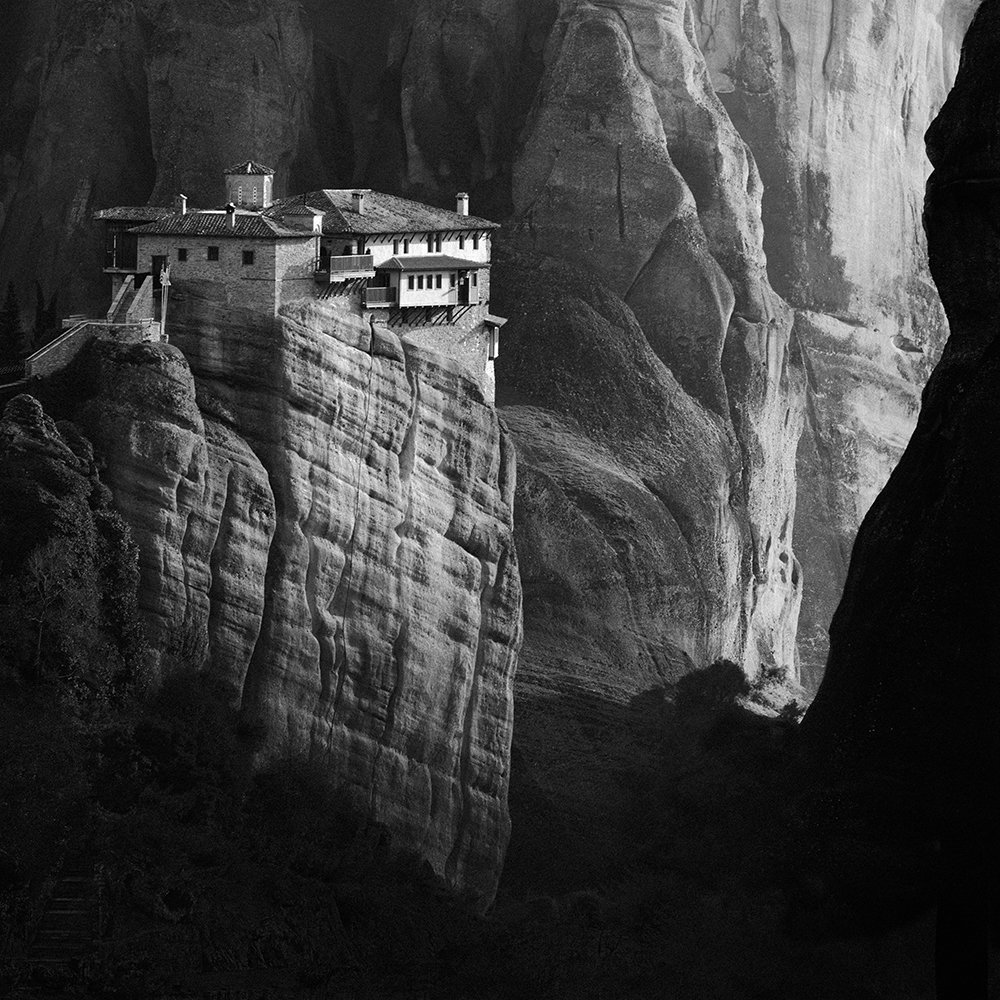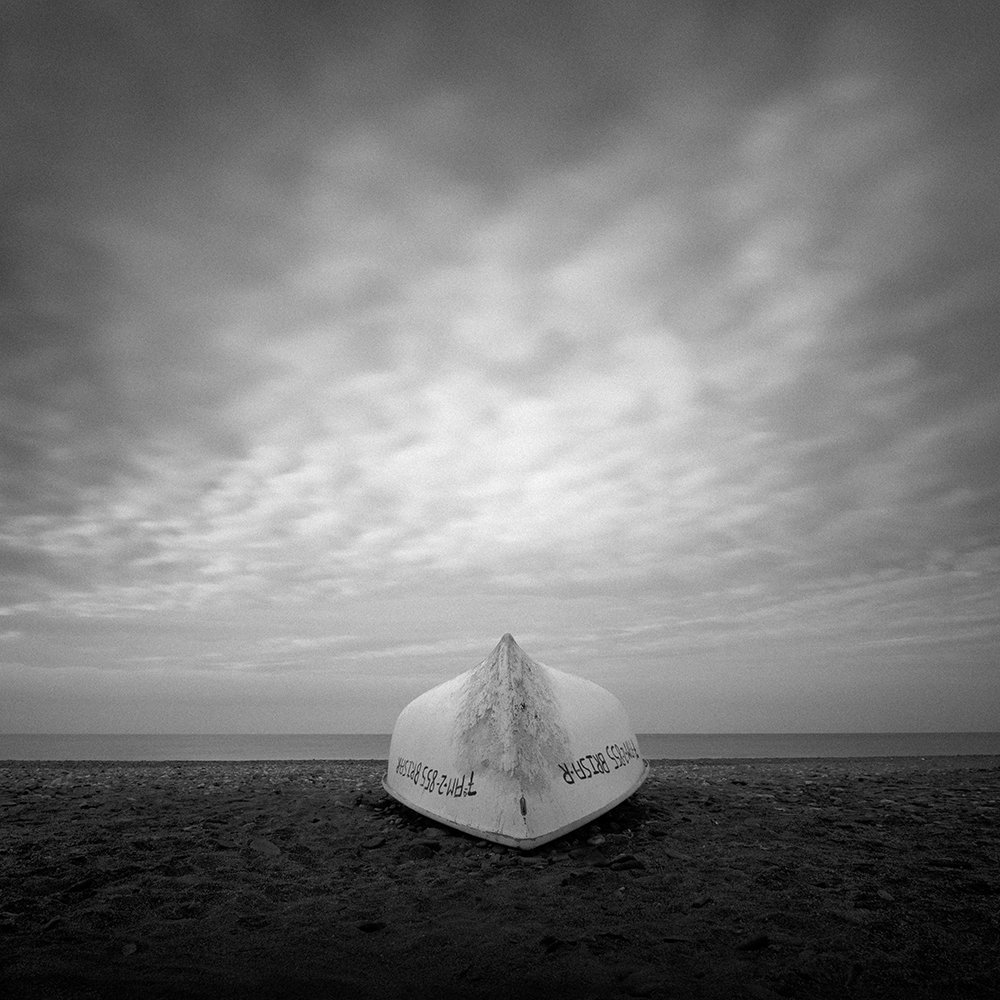Indeed, black and white photography is a deliberate choice that can offer a unique perspective. In today's interview, Daniel Castilloux provided a compelling example, showcasing how the world takes on a distinct and compelling appearance through the lens of black and white photography.
Daniel, a meticulous craftsman in the realm of photography, approaches his compositions with textbook precision. While the realm of minimalistic black and white photography is vast, Daniel’s work stands out with a unique and breathtaking grayscale, setting his creations apart from others. At least, this is the deeply ingrained impression I've experienced. Particularly notable are the expansive gray tones in the depth of some of his pieces, creating a dreamlike ambiance that leaves an indelible mark.
Photo by Daniel Castilloux
Within the choices he makes in composition, one can discern his restraint and profound respect for the subjects. From natural landscapes to urban architecture, from small trees to towering mountains, and from historic sculptures to modern abstract lines, one can sense his meticulous approach to everything that catches his discerning eye. Through his lens, he captures each subject, imbued with his contemplation. Amidst the chaotic reality, he presents the beauty of inner order and introspection—a manifestation of his observation and contemplation, a seamless fusion of thought and dreams. I believe he uses photography as a means to fulfill his spiritual journey.
The impression his works leave on me is one of exquisite simplicity, rich in detail, and a wide-ranging exploration of geographical subjects that I deeply admire. His dedication and passion are evident in every piece, accumulated over time. If Daniel links his website on his Instagram page, be sure to check them out. There are photographs from more than twenty countries around the world—a truly extraordinary collection. I eagerly anticipate the day when his collective works materialize into a published book!
Photo by Daniel Castilloux
1. When did your passion for photography first ignite, and what inspired you to pursue it as a form of expression?
I bought my first camera when I was 13 and I have no clue why. An urge to create? Not at all. The most likely reason is my then student job which exposed me to hundreds of well-known international magazines (National Geographic, Zoom, Photo, Geo, Vogue, etc.), which all contained beautiful images. During my lunch break I could flip through those magazines but the biggest perk of the job was that I could take home unsold copies. It was my internet, before the internet. I looked at thousands of professionally-taken images and maybe this is what inspired me to burn my savings on a SLR camera.
As a young photographer I would take colour snaps, moving over time to black and white, and in my mid-teens was introduced to developing and printing techniques at my school’s photography club. It sounds like I was onto something, right?, but it was all total rubbish. My interest slowly faded though and as I reached university I had completely abandoned photography. It would resurface 15 years later in an unexpected way.
Photo by Daniel Castilloux
2. Your black and white, square-cropped compositions showcase impeccable composition. What influences shaped your artistic vision?
“Impeccable”, a big word. Twenty years ago, while living in Japan, as I was about to leave my local bookstore, Michael Kenna’s Retrospective Two book caught my eye. One of many books displayed with a simple and beautiful cover image. I flipped through the book and instantly connected, emotionally. He was speaking a language I wanted to speak, not in the sense of replicating what he does but as a means of expression (conveying serenity, tranquility). His images also conveyed a strong Japanese aesthetic, which resonated as I was immersing myself in that culture at that time. That book reignited my love of photography and led me to buy a DSLR camera.
Photo by Daniel Castilloux
3. How do you approach and masterfully create the contrast between foreground and background in your shots, contributing to the creation of an ideal world within each photograph and setting your work apart from others in the same genre?
I suppose I get my camera out when conditions allow for this. It’s definitely not thought-through, an unconscious reflex.
4. Your work exudes a sense of tranquility and cleanliness. How do you capture such peaceful moments, and what do you hope viewers experience when immersed in your photographic world?
Such a sense in my work is probably because I am very much at peace when I take pictures. It’s my Zoloft. Photography quiets the noise in my head and naturally my eyes are then drawn to scenes that fit this mood of tranquility. A good example is when I’m in cities (which by the way are definitely not my favorite location for photography): these are often visually overwhelming and loud and here I can bypass all the chaos around me and tune into scenes that are simple and calming. I guess this is ultimately reflected in the sense of my images. If I can bring the same feelings to the viewers than it’s a bonus.
Photo by Daniel Castilloux
5. Could you elaborate on your perspective regarding photography as a manipulative art? How do you balance manipulation with the beauty that emanates from your images?
I tend to edit my images the same way I would using traditional lab techniques because I find the end-result pleasing, and this is also how I learned to print. These are not rules but rather guidelines as creativity should not be guided by rules. I am very liberal about what people should or shouldn’t do post-production. There seems to be an audience for over-processed as well as over-manipulated images and that’s fine. Also, if people want to use AI tools/image generator then why not. However, photography for me is about being outdoors, exploring/working a scene to find the right composition, and the emotion I get when I see the final print.
Photo by Daniel Castilloux
6. Can you share any specific experiences or moments that led to the evolution of your minimalist aesthetic in photography?
I’m drawn to scenes that have fewer elements. Minimalism, despite its apparent simplicity, has its intricacies and my brain loves it. It might be coming from my background in mathematics. A highly speculative assumption but if I think for two seconds, then there’s probably a case to be made between mathematical beauty and minimalistic photography as they share similar qualities (purity, simplicity, abstractness, order, etc.) but it’s better if I don’t go there – yawn!
Photo by Daniel Castilloux
7. Your compositions seem textbook-worthy due to their perfection. Can you share any insights into your process of achieving such precision in framing and capturing moments?
I would say “attempts at perfection” but far from it! Composition is the variable I used to struggle the most with. There are rules for that but rules are boring and there were tons of cases where they didn’t work. I needed a system and here I give full credit to (oh no not again) Michael Kenna as his website shares hundreds of images. It’s a mine of knowledge, literally. I repeatedly looked at these images, one by one, asking myself why these images work. They often appear simple but are deceptively complex. Through this process I could also grasp a second aspect that complements composition: photo editing. It is in itself an art form, something that requires as much thought and creativity as framing a scene. These were the foundations from which I built my own style and vision. Looking back over my work I can see how my composition has evolved over the years, and it is not that my style has changed but that I am now better able to capture scenes in a way that is truer to my vision. So, it is a work-in-progress.
8. How do you navigate the challenge of creating a universal aesthetic that transcends cultural differences, allowing viewers from various backgrounds to connect with your work?
If it’s the case, then it’s an unintentional byproduct of my images. Because the images are simple, stripped back, there is less in the way and I suppose it allows easy connection.
Photo by Daniel Castilloux
9.How do you maintain focus on your artistic vision and resist distractions, particularly in the era of social media sharing, to ensure that your work remains authentic and true to your identity as an artist?
First and foremost, I take pictures for myself. It’s a way of documenting my journey through life. Social media is great for sharing and most importantly they give access to other photographers’ works, which can be inspiring. But it is also a bottomless pit and can be highly distracting. The only social media I use is Instagram and when I visit I’m very focused and selective. Time is precious and I prefer to enjoy life outside the virtual world. When I’m out and about I’m not connected (to the digital world); I open my eyes and enjoy the world.
Vivian Maier took more than 100,000 pictures, almost none of which she revealed to the public eye. She became famous after her death when her images were discovered. She created for herself. Let our Vivian Maier within awaken!
Photo by Daniel Castilloux
10. How do you perceive the current state of the photography world, considering its overwhelming nature? Additionally, could you share your long-term goals and aspirations within this competitive environment?
A few years ago, I was taking pictures on a beach in Norway when a van arrived and spat out six photographers. Out they were, in a hurry, setting up their tripods side-by-side and pointing their cameras in the same direction. A few minutes later they were gone. As I never research for specific locations before traveling it only then dawned on me that I was in a hot photo spot. It puzzled me that some photographers would invest thousands of dollars in equipment, be rushed from one place to another to get the exact same picture as hundreds of other photographers, and not have time to appreciate the beauty of the place. If this is photography then I find it sad and boring.
Thankfully there is a brighter side. Photography is now very accessible be it in terms of equipment (phone, camera), resources to learn or to show your work. Something that was not possible twenty years ago. Also, if one takes time to cut through the noise of the internet then there are truly inspiring photographers out there. More than at any other time in the history of photography. We are lucky to live in such a world.
As for goals and aspirations, I recently bought a couple of fast prime lenses. Zooms are nice to use but make me lazy. Working at a fixed focal length will bring new challenges. A step outside my comfort zone, which I welcome. Finally, I would like to complete a book that has been in the making for quite a while.
Thanks Daniel and Please find more his work @danoutandabout
Thank YOU for reading!








